This piece is part of a series titled “Nonstate armed actors and illicit economies in 2022” from Brookings’s Initiative on Nonstate Armed Actors. It is based in part on the author’s forthcoming book “America and the Yemens: A Tragic Encounter.”
The Houthis have won the war in Yemen, defeating their opponents in the civil war, the Saudis who intervened in 2015 against them, and the United States which backed the Saudis. It is a remarkable accomplishment for a militia group with no air force or navy. It is also strikingly like Hezbollah’s success story in Lebanon.
Who are the Houthis?
The Houthis are Zaydi Shiite Muslims, significantly different in doctrine and beliefs from the Shiites who dominate in Iran, Iraq, and elsewhere. They take their name from Zayd bin Ali, the great-grandson of Ali, the Prophet Muhammad’s cousin and son-in-law, whom all Shiites revere. In 740, Zayd led an uprising against the Umayyad Empire, which ruled from Damascus. He was martyred in his revolt, and his head is believed to be buried in a shrine to him in Kerak, Jordan. Zaydis believe he was a model of a pure caliph who should have ruled instead of the Umayyads. The distinguishing feature of Zayd’s remembered biography is that he fought against a corrupt regime. The Houthis have made fighting corruption the centerpiece of their political program, at least nominally.
Followers of Zayd established themselves in north Yemen’s rugged mountains in the ninth century. For the next thousand years, the Zaydis fought for control of Yemen with various degrees of success. They fought against both the Ottomans and the Wahhabis in the 18th and 19th centuries. With the collapse of the Ottoman Empire in 1918, a Zaydi monarchy called the Mutawakkilite Kingdom took power in North Yemen.
In 1962, an Egyptian-backed revolutionary military cabal overthrew the Mutawakkilite king and established an Arab nationalist government with its capital in Sanaa. With Soviet assistance, Egypt sent tens of thousands of troops to back the republican coup. The Zaydi royalists fled to the mountains along the Saudi border to fight a civil war for control of the country. Saudi Arabia supported the royalists against Egypt, as did Israel, clandestinely. The war ended in a republican victory.
A Zaydi republican general named Ali Abdullah Saleh came to power after a succession of coups in 1978. Saleh ruled — or misruled — Yemen for the next 33 years. He united North and South Yemen in 1990, tilted toward Iraq during the 1991 Gulf War, and survived a Saudi-backed southern civil war in 1994. The Houthis emerged in the 1990s as a Zaydi resistance to Saleh and his corruption, led by a charismatic leader named Hussein al-Houthi, from whom they are named.
The American invasion of Iraq in 2003 deeply radicalized the Houthi movement, like it did many other Arabs. The Houthis adopted the slogan: “God is great, death to the U.S., death to Israel, curse the Jews, and victory for Islam.” The group also officially called itself Ansar Allah, or supporters of God. It was a turning point largely unrecognized outside Yemen, another unanticipated consequence of George W. Bush’s Iraq adventures.
After 2003, Saleh launched a series of military campaigns to destroy the Houthis. In 2004, Saleh’s forces killed Hussein al-Houthi. The Yemeni army and air force was used to suppress the rebellion in the far north of Yemen, especially in Saada province. The Saudis joined with Saleh in these campaigns, but they were unsuccessful.
The Arab Spring came to Yemen in 2011. Saleh was ousted as president in February 2012 and replaced by his former deputy, Abed Rabbo Mansour Hadi. In 2014, the Houthis began secretly colluding with Saleh against Hadi. Even by the standards of Middle East politics, it was a remarkable and hypocritical reversal of alliances by both the Houthis and Saleh. It was temporary; the Houthis killed Saleh in December 2017 as he tried to switch sides again to join the Saudis.
Why have they won?
Hezbollah, the Shiite movement in Lebanon which successfully expelled the Israeli army from the country in 2000, became an early role model and mentor for the Houthis. Iran is another source of support, especially since the Houthis and Iranians share a common enemy in Saudi Arabia.
Hezbollah’s success foreshadowed the Houthis’ in many ways. Both groups are serial human rights abusers who have successfully positioned themselves as the nationalist defenders of their country against hated foreign enemies: Israel and Saudi Arabia (both backed by America). Hezbollah ousted the Israelis from Lebanon after two decades of struggle, leading to the collapse of the Israeli-supported Christian mini-state in the country’s south. It now threatens Israel with tens of thousands of missiles and drones. The Houthis easily got the upper hand on the Saudis at the outset of their intervention in 2015 and now are poised to capture the last city in the north, Marib, controlled by Riyadh’s Yemeni clients. The Houthis routinely attack targets inside Saudi Arabia — and now in Abu Dhabi — with missiles and drones using technical expertise from Iran and Hezbollah.
The cost of the war to Yemenis is staggering. The United Nations Development Programme estimated in November that 377,000 Yemenis will have been killed by the conflict by the end of 2021, most indirectly and not in combat, 70% of them children under the age of five. The Saudi blockade of Yemen is a principal cause of the humanitarian catastrophe by denying food and medicine to the country.
What’s next?
The battle for Marib is the critical next stage in the war. The Houthis have already made significant gains recently on the ground around the port city of Hodeida. They seem to be in no hurry to complete the conquest of Marib.
It is unclear if the Houthis have ambitions beyond northern Yemen. The south is primarily Sunni with very few Zaydis. Saudi Arabia seized parts of Yemen in a war in the 1930s; some Houthis may aspire to regain this lost territory, but they have not publicly demanded any changes to the border.
From its outset, the Biden administration painted peace in Yemen as a top priority, but it has done little to secure an end to the fighting. It continues the policy of its two predecessors of backing and selling arms to the Saudis. Meanwhile, the Houthis are in no hurry to end a war they have already won.
No single policy is likely to bring peace to Yemen. In the end, that is up to the Yemenis, not the Americans and surely not the Saudis. Yemen is a very divided society today; it is unclear it will ever be a unified state again. Ali Abdallah Saleh may be the only Yemeni to ever rule over a united Yemen. It may be wise for the international community to set its sights and goals on encouraging peace between the parts of Yemen, not on unification itself.
The place to start is in the U.N. Security Council. Yemen needs a new Security Council resolution to guide the peace effort, not the existing one that was tilted deliberately toward Saudi interests. As a first principle it should call for an immediate and total halt to all foreign interference in Yemen. This would mean ending the Saudi blockade and airstrikes inside Yemen. All military support to the Hadi government should be completely halted.
This would also mean that Iran and its allies should halt their support to the Houthi including ending the transmission of technical expertise for drones and missiles. Iranian and Hezbollah advisers would have to leave Yemen. But commercial air flights between Sanaa and Tehran should be allowed as well as Iranian development projects including in the port of Hodeida.
The existing U.N. Verification and Inspections Mechanism for Yemen (UNVIM) should be greatly expanded in mission and personnel to provide inspectors at all Yemeni ports and airfields to ensure no major violations of the resolution are perpetrated by either side. The existing UNVIM mandate is tied to UNSCR 2216 and involves only inspecting Houthi-controlled ports like Hodeida.
If Saudi Arabia does not cease military operations in Yemen and lift the blockade, the United States should cease all arms sales and contracts with the kingdom. All American military personnel should be withdrawn from the country as well as all American contractors, as in Afghanistan. This would include technicians keeping the Royal Saudi Air Forces’ (RSAF) fleet of American-produced aircraft operating and bombing Yemen.
The impact on the Saudi military would be immediate and devastating. The RSAF would not be able to keep aircraft in the air, let alone operational fighting machines. The Saudi army and national guard would also be crippled. The navy would be the least impacted because it has a more diverse number of sources for its warships, but it too would be in difficulty.
Dealing with the Houthis will not be easy after the war. Their anti-American posture is deeply rooted in the origins of the movement, a legacy of the poor decision to invade Iraq in 2003. It is compounded by seven years of support for a war led by a neighbor most Yemenis hate and characterized by air strikes, blockade, and intentional mass starvation. But the urgent imperative is to halt the blockade and get aid to the Yemeni people. That should be America’s priority.
The Brookings Institution is committed to quality, independence, and impact.
We are supported by a diverse array of funders. In line with our values and policies, each Brookings publication represents the sole views of its author(s).

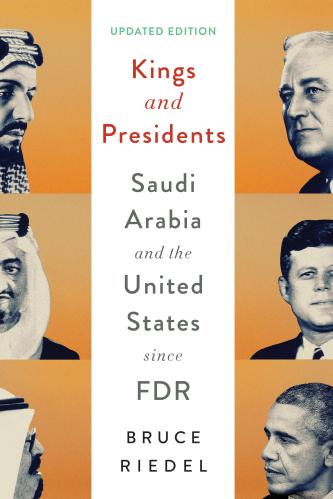
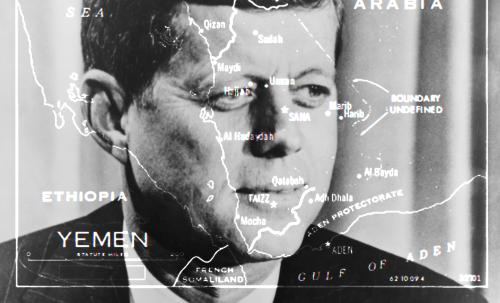
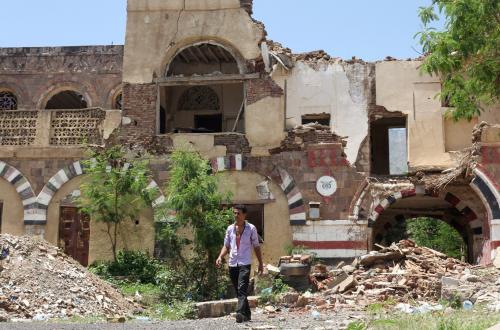
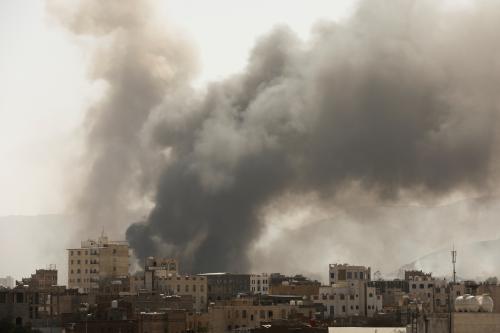

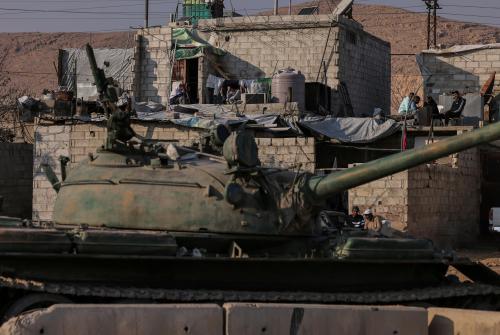
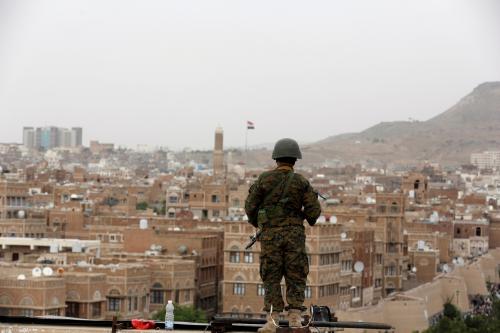
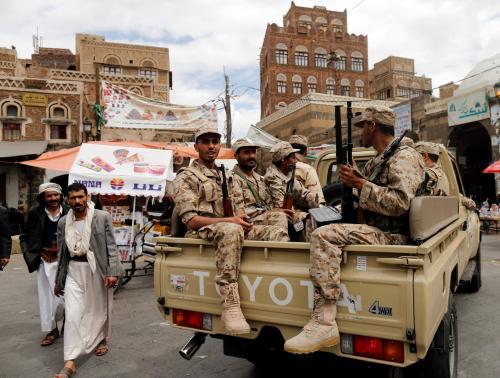
Commentary
The Houthis have won in Yemen: What next?
February 1, 2022